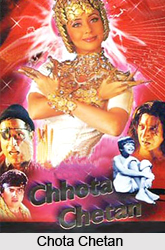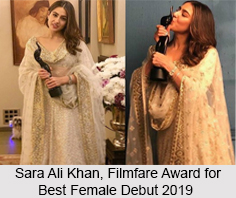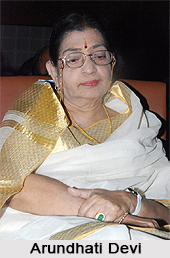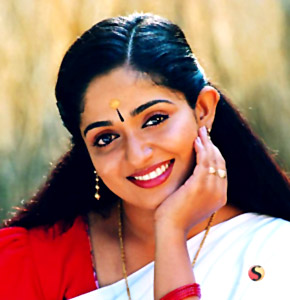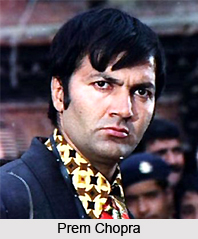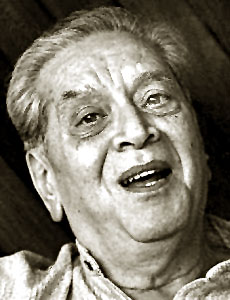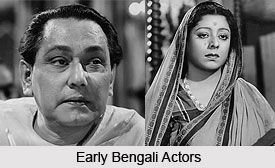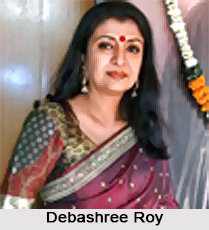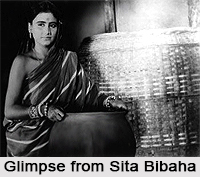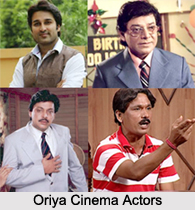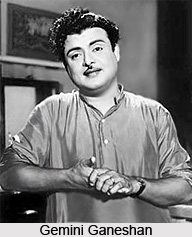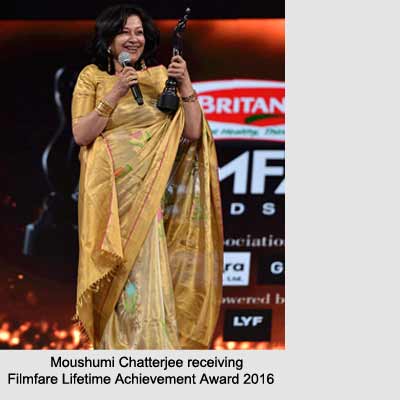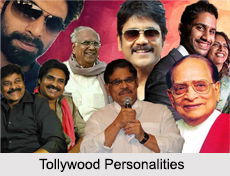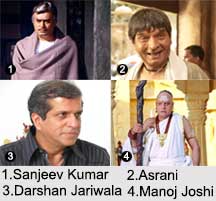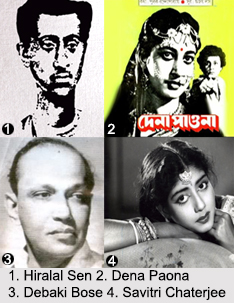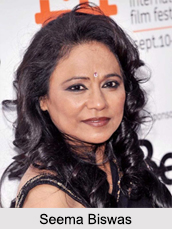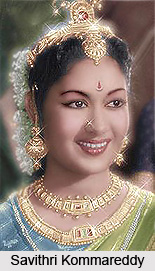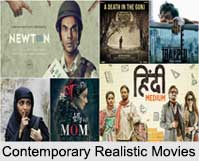 Bollywood is sometimes also being known as Hindi cinema and is the Indian Hindi-language film industry which is based in the city of Mumbai, Maharashtra. It is a part of the larger cinema of India. It is also one of the largest film producers as well. Bollywood is therefore one of the largest centres of film production in the world.
Bollywood is sometimes also being known as Hindi cinema and is the Indian Hindi-language film industry which is based in the city of Mumbai, Maharashtra. It is a part of the larger cinema of India. It is also one of the largest film producers as well. Bollywood is therefore one of the largest centres of film production in the world.
Etymology of Bollywood
The name "Bollywood" is derived from "Bombay" and "Hollywood". The naming system for "Bollywood" was inspired by "Tollywood", the name that was used to refer to the cinema of West Bengal.
History of Bollywood
The first silent feature film made in India was "Raja Harishchandra" (1913), by Dadasaheb Phalke, The first Indian sound film, Ardeshir Irani`s "Alam Ara" (1931), was a chief commercial success. In 1937, Ardeshir Irani made the first colour film in Hindi, "Kisan Kanya". The next year, he made another colour film, a version of "Mother India".
In the 1940s, a lot of actors, filmmakers and musicians of the Lahore industry migrated to the Bombay film industry such as K.L. Saigal, Prithviraj Kapoor, Dilip Kumar and Dev Anand and singers such as Mohammed Rafi, Noorjahan and Shamshad Begum. Around that time, filmmakers and actors from the Bengali film industry based in Kolkata also began migrating to the Bombay film industry.
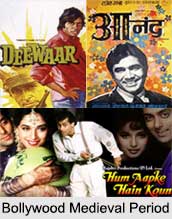 After India`s independence, the late 1940s to the early on 1960s is regarded by film historians as the "Golden Age" of Hindi cinema. Films like "Pyaasa" and "Kaagaz Ke Phool", "Awaara", "Shree 420", "Aan" had articulated the social themes mostly dealing with working-class life in India. "Mother India", directed by Mehboob Khan was the first Indian film to be nominated for the Academy Award for Best Foreign Language Film. "Madhumati" directed by Bimal Roy and written by Ritwik Ghatak, popularised the subject matter of rebirth in Western popular culture. Some of the most famous classic films of Hindi cinema were also produced at the time like K. Asif`s "Mughal-e-Azam". Dilip Kumar, Pradeep Kumar, Raj Kapoor, Dev Anand, and Guru Dutt were well known actors while flourishing actresses included Sumitra Devi, Nargis, Suraiya , Vyjayanthimala, Meena Kumari, Nutan, Madhubala, Sadhana, Waheeda Rehman and Mala Sinha.
After India`s independence, the late 1940s to the early on 1960s is regarded by film historians as the "Golden Age" of Hindi cinema. Films like "Pyaasa" and "Kaagaz Ke Phool", "Awaara", "Shree 420", "Aan" had articulated the social themes mostly dealing with working-class life in India. "Mother India", directed by Mehboob Khan was the first Indian film to be nominated for the Academy Award for Best Foreign Language Film. "Madhumati" directed by Bimal Roy and written by Ritwik Ghatak, popularised the subject matter of rebirth in Western popular culture. Some of the most famous classic films of Hindi cinema were also produced at the time like K. Asif`s "Mughal-e-Azam". Dilip Kumar, Pradeep Kumar, Raj Kapoor, Dev Anand, and Guru Dutt were well known actors while flourishing actresses included Sumitra Devi, Nargis, Suraiya , Vyjayanthimala, Meena Kumari, Nutan, Madhubala, Sadhana, Waheeda Rehman and Mala Sinha.
As the commercial Hindi cinema was flourishing, the 1950s also saw the appearance of a new Parallel Cinema movement. The movement stressed on the social pragmatism. The examples of films in this movement include "Dharti Ke Lal", "Neecha Nagar" which won the Grand Prize at the first Cannes Film Festival, "Do Bigha Zamin" etc. Guru Dutt is at present regarded as one of the greatest Asian filmmakers of all time along with the more famous Indian Bengali filmmaker Satyajit Ray.
In the early 1970s, Bollywood was dominated by musical romance films with leads like Rajesh Khanna, Shammi Kapoor, Jeetendra, Dharmendra, Sanjeev Kumar, and Shashi Kapoor and actresses like Sharmila Tagore, Mumtaz, Saira Banu, and Asha Parekh. The entrance of screenwriter duo Salim-Javed, consisting of Salim Khan and Javed Akhtar, marked a hypothesis shift while refreshing the industry. They started the kind of rough, aggressive, underworld crime films like "Zanjeer" and "Deewaar" and the period saw the emergence of Amitabh Bachchan. Along with him, other actors of this movement include Feroz Khan, Mithun Chakraborty, Naseeruddin Shah, Jackie Shroff, Sanjay Dutt, Anil Kapoor and Sunny Deol which lasted into the early 1990s. Actresses from this period included Hema Malini, Jaya Bachchan, Raakhee, Shabana Azmi, Zeenat Aman, Parveen Babi, Rekha, Dimple Kapadia, Smita Patil, Jaya Prada and Padmini Kolhapure. "Yaadon Ki Baarat" directed by Hussain and written by Salim-Javed, has been identified as the first "masala" Bollywood film. A landmark for the "masala" film genre was Manmohan Desai"s "Amar Akbar Anthony".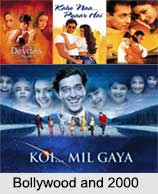
The "masala" film and the vicious crime films were represented by the blockbuster "Sholay". Shyam Benegal continued to make realistic Parallel Cinema throughout the 1970s. The most internationally praised Hindi film of the 1980s was Mira Nair`s "Salaam Bombay!" which won the Camera d`Or at the 1988 Cannes Film Festival and was nominated for the Academy Award for Best Foreign Language Film. In the late 1980s,the film "Qayamat Se Qayamat Tak" directed by Mansoor Khan, written and produced by his father Nasir Hussain, starring his cousin Aamir Khan with Juhi Chawla was a intermingle of youthfulness and strong melodies.
Contemporary Bollywood Industry
"Qayamat Se Qayamat Tak"was followed by the blockbusters such as "Maine Pyar Kiya", "Chandni", "Hum Aapke Hain Kaun", "Dilwale Dulhania Le Jayenge", "Raja Hindustani", "Dil To Pagal Hai", "Pyaar To Hona Hi Tha" and "Kuch Kuch Hota Hai". A new generation of popular actors emerged like Aamir Khan, Govinda, Aditya Pancholi, Ajay Devgan, Akshay Kumar, Salman Khan and Shahrukh Khan and actresses such as Madhuri Dixit, Sridevi, Juhi Chawla, Meenakshi Seshadri, Manisha Koirala, Kajol and Karisma Kapoor.
Other actresses included Raveena Tandon, Twinkle Khanna, Sonali Bendre, Sushmita Sen, Aishwarya Rai, Mahima Chaudhary and Shilpa Shetty.
This decade also marked the emergence of Art Films like "Satya" directed by Ram Gopal Varma and written by Anurag Kashyap which led to the appearance of a different genre known as "Mumbai social problems". These films featured actors like Nana Patekar and Manoj Bajpai and actresses like Tabu, Pooja Bhatt and Urmila Matondkar. The three biggest Bollywood movie stars Aamir Khan, Shah Rukh Khan, and Salman Khan gained popularity in the early1990s. Some of the largest production houses were also set up, among them "Yash Raj Films" and "Dharma Productions" were the producers of new contemporary films. Some popular films of the decade were "Kaho Naa Pyaar Hai", "Gadar: Ek Prem Katha", "Lagaan", "Koi Mil Gaya", "Munna Bhai M.B.B.S.", "Rang De Basanti", "Lage Raho Munna Bhai", "Dhoom 2", "Krrish" and "Jab We Met" among others. This era also saw the rise of popular actors and movie stars like Arjun Rampal, Hrithik Roshan, Abhishek Bachchan, Vivek Oberoi, R Madhavan, Shahid Kapoor 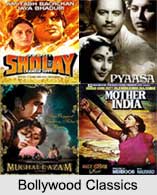 and John Abraham, as well as actresses like Rani Mukerji, Preity Zinta, Ameesha Patel, Lara Dutta, Bipasha Basu, Kareena Kapoor, Priyanka Chopra and Katrina Kaif.
and John Abraham, as well as actresses like Rani Mukerji, Preity Zinta, Ameesha Patel, Lara Dutta, Bipasha Basu, Kareena Kapoor, Priyanka Chopra and Katrina Kaif.
In the era of 2010s, Bollywood saw the movement of big-budget "masala" entertainers like "Dabangg", "Ek Tha Tiger", "Rowdy Rathore", "Chennai Express", "Kick" and "Happy New Year". The era also saw the rise of a new generation of popular actors like Irrfan Khan, Adil Hussain, Rajesh Sharma, Atul Kulkarni, Ranbir Kapoor, Ranveer Singh, Varun Dhawan, Sidharth Malhotra, Sushant Singh Rajput, Arjun Kapoor, Aditya Roy Kapur, Rajkumar Rao, Nawazuddin Siddiqui and Tiger Shroff, as well as actresses like Richa Chaddha, Freida Pinto, Vidya Balan, Kangana Ranaut, Radhika Apte, Deepika Padukone, Sonam Kapoor, Anushka Sharma, Sonakshi Sinha, Jacqueline Fernandez, Shraddha Kapoor, Bhoomi Pednekar, Swara Bhaskar and Alia Bhatt. Vidya Balan and Kangana Ranaut gained wide appreciation for successful female-centric films such as "The Dirty Picture", "Kahaani" and "Queen" and "Tanu Weds Manu Returns".
Bollywood Playback Singers
Expert playback singer Kishore Kumar was one of the prominent names of Bollywood as a multifaceted actor, who acted in a number of films in the 1950s and also had a bright career as playback singer.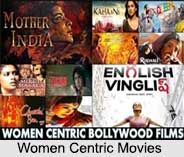 Some of the eminent female playback singers of Bollywood are Suraiyya, Noor Jehan, Lata Mangeshkar, Asha Bhosle, Geeta Dutt, Shamshad Begum, Alka Yagnik and the notable male playback singers are K. L. Saigal, Talat Mahmood, Mukesh, Mohammed Rafi, Manna Dey, Hemanta Kumar Mukhopadhyay, Narayan, Sonu Nigam. Some of the notable music directors are S.D. Burman, Bappi Lahiri, O.P. Nayar, Nadeem Shravan, Shankar Mahadevan and Anu Malik.
Some of the eminent female playback singers of Bollywood are Suraiyya, Noor Jehan, Lata Mangeshkar, Asha Bhosle, Geeta Dutt, Shamshad Begum, Alka Yagnik and the notable male playback singers are K. L. Saigal, Talat Mahmood, Mukesh, Mohammed Rafi, Manna Dey, Hemanta Kumar Mukhopadhyay, Narayan, Sonu Nigam. Some of the notable music directors are S.D. Burman, Bappi Lahiri, O.P. Nayar, Nadeem Shravan, Shankar Mahadevan and Anu Malik.
Bollywood In Overseas
Bollywood has been increasing India`s influence in abroad from a very long time. It has also influenced Hollywood and other film industries. Baz Luhrmann stated that his musical film "Moulin Rouge!" was inspired by Bollywood musicals. Indian film composer A. R. Rahman wrote the music for Andrew Lloyd Webber`s "Bombay Dreams". Bollywood film "Lagaan" was nominated for the Academy Award for Best Foreign Language Film, and two other Bollywood films "Devdas" and "Rang De Basanti" were nominated for the BAFTA Award for Best Film Not in the English Language.
Awards of Bollywood
One of the oldest and most famous film awards given for Bollywood films in India is The Filmfare Awards. It is sometimes considered as the "Indian Oscars". The distribution of Filmfare awards first commenced in 1954. In contrast to the National Film Awards (sponsored by the Government of India), which are decided by a panel appointed by Government of India, the Filmfare Awards are voted by both the public and a group of experts. The National Film Awards are handed out at a yearly ceremony presided over by the Indian President. Other award ceremonies related to Bollywood are Stardust Awards and Star Screen Awards. Some other award ceremonies are held overseas.
